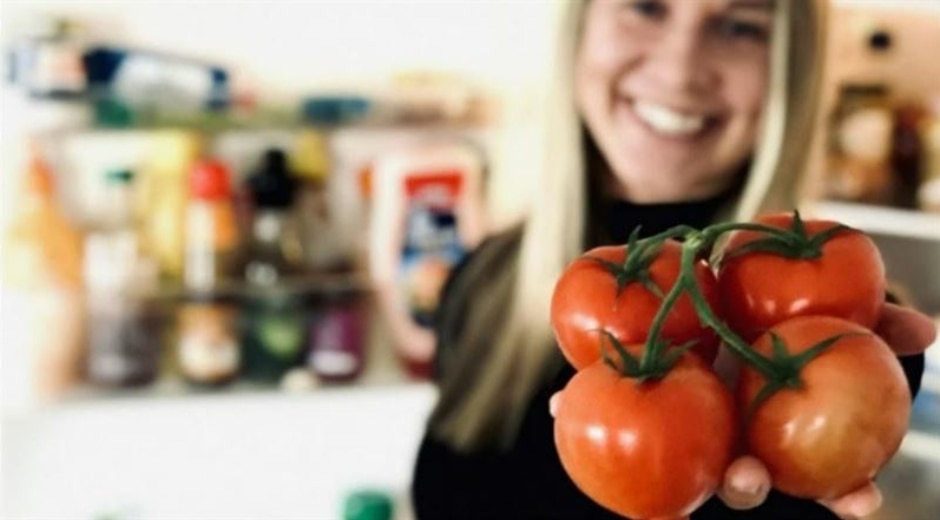What’s better — buying fresh or frozen? Storing apples cold? Food scientist Hanna Nykänen explains how to make food last longer to help you prevent food waste and save money.
In the supermarket, most fresh fruit and vegetables are displayed at room temperature. Should we be doing the same at home?
The way supermarkets display their products is not always the best for long-term preservation. Different fruit and vegetables have their own requirements for optimal preservation. Lettuce, cucumbers, carrots, cabbages, strawberries and apples are all common examples of food that is better preserved in the fridge. Also, freshly picked herbs and some herb plants (coriander) last longer at refrigerated temperatures.
Another good point to raise in terms of temperature is to check your fridge settings – the temperature should be about 4 °C for better and longer preservation.
We want our fruit and vegetables to last as long as possible. Is it better to buy frozen or would we lose the nutritional benefits?
Frozen foods have inherited an unfairly bad reputation due to 50s TV dinners and frozen peas. Today’s food industry is using new technologies where the produce is flash-frozen immediately after harvest. This has two main benefits – the nutritional content of the freshly-picked produce is locked inside, and the rapid freezing prevents texture loss due to smaller ice crystal formation inside the product. Compared to the fresh produce we buy at the supermarket, which has been transported and stored for a time after harvest allowing nutritional content to degrade, the frozen foods will have a higher nutritional value.
The new freezing technologies are visible in the broad range of fresh frozen fruits and vegetables we can find in the stores today. Almost all produce can be sold frozen nowadays which challenges the fresh food sector and seasonal limitations. And, of course, freezing can make cooking more convenient by, for instance, always having herbs and chopped onions frozen in portions.
So how long can you keep food in the freezer? Does it lose nutritional value?
Packaging is extremely important when it comes to freezing, since the air in the freezer is often much dryer than in the refrigerator. Well-packaged (airtight) produce can last very long when frozen without losing appearance or taste.
Frozen fruits and vegetables should be eaten within a year; if stored longer, they might fade in color and taste.
Cooked meats can last in a sealed container for up to three months frozen (and three to four days in the refrigerator).
What about tinned fruit versus fresh or frozen?
The same applies to tinned fruits as to frozen. Fruits are often put in the can directly after harvest, and there is no time for degradation of the nutritional content. Due to the heating process during canning, some vitamins might be destroyed, but when sealed the nutritional value will last very long (tinned products can last up to 10 years).
Canned fruits are often stored in sweet syrup and are therefore not such healthy options. One tip is to buy canned unsweetened fruits stored in their own juice or water.
What classic mistakes do you see consumers make when it comes to food preservation?
Not all foods last longer in the refrigerator, and there are two main reasons for this. The first is chill injury. Exotic fruits such as bananas, pineapples and mangoes should not be stored at temperatures lower than 8 °C since the structure and texture is negatively affected.
The second reason is ethylene and ripening. Some fruits and vegetables produce ethylene that promotes ripening. The ethylene production is reduced or stopped when these foods are stored in low temperatures. So, tomatoes, avocados and mangoes for example, should be stored on the kitchen counter in order to mature and develop flavors. Once ripe you can move them to the refrigerator for longer preservation.
Another common mistake is storing potatoes and bread in the refrigerator. Don’t do it! The starch will undergo irreversible change. This leads to unfavorable taste and texture in potatoes, and your bread will go stale.
How should we organize our refrigerator?
Make the fridge a display of healthy options. Often when we open the door, we don’t really know what we are looking for and easily fall into temptations. The shelves at eye level should contain things that are about to expire and that should be eaten soon, but also healthy snack options.
Use the crispers (vegetable drawers) for fruit and vegetables as they will be preserved better when sealed. If you have two, use one for fruits and the other for vegetables, so that they don’t mix. Otherwise, be creative with boxes.
The door is actually the warmest place in the refrigerator and therefore not ideal for milk even if the design seems to be made for that. Keep your milk on the shelf just above the vegetable drawers and use the door for condiments and sauces.
What does your fridge look like? As an expert, what are some of your tricks?
My refrigerator is actually often pretty empty. I try not to waste anything and only buy food once per week. On the other hand, if you have a look in my freezer, you will find it completely full. I try to always have portion-size meals and sliced bread frozen, in case of emergency.
Hanna Nykänen is Claims Development Manager in the Food Preservation team at Electrolux. She is passionate about fighting for a society with a higher focus on sustainable taste – without food waste.



